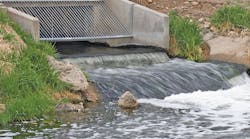A typical water utility needs to maintain and manage hundreds of miles of infrastructure across its service area — including pipelines, pumping stations, water treatment plants, and storage and distribution systems. Today, the SCADA (supervisory control and data acquisition) systems that monitor the status of these extensive operations are being pushed to their limits.
This decades-old technology is limited in its ability to monitor these operations, especially as they continue to expand to support growing populations of residential and business customers. This limited visibility of assets restricts the utility’s ability to detect and mitigate potential threats and vulnerabilities.
Upgrading SCADA at a major public water utility
American Water, the largest publicly traded U.S. public utility, provides water and wastewater services for more than 14 million people in 24 states. Recently, the decision was made to convert its outdated SCADA system into a modern system that meets ISA 101 and high-performance HMI standards.
Specifically, American Water needed to help improve the ability of its operators to respond to abnormal events, enable centralized access to data from multiple sites, and integrate data from back-end systems.
Challenge 1: Inconsistent HMI/SCADA standards at multiple sites. The hundreds of water and wastewater locations that American Water maintains across the United States had been using disparate platforms — with unique HMI/SCADA system depictions and design symbology for operator interfaces — to manage the data for their specific sites.
As a result, in the event of heavy rainfall or other abnormal weather covering a wide area, an operator might receive multiple alarms with different symbols. Without prior knowledge of the system used by the other sites, it was difficult for the operator to quickly assess the situation and put the data into context.
Challenge 2: Limited access to data across systems. Water utilities use their SCADA systems to collect a wide range of data for making critical decisions about issues such as leaks, overflows, and chemical imbalances. In most cases, that data is transmitted to a centralized location where it is monitored and analyzed.
At American Water, each site or region had historically maintained data for its specific location, with no access to that data available at the enterprise level. For American Water to achieve its vision of digital transformation, it was going to need to have all of its data sets in one central platform to facilitate informed decision-making for a wide range of operations.
Challenge 3: Bridge the gap to external systems. In addition to centralized access to operational data from disparate locations, American Water operators needed access to operational data from other enterprise systems (e.g., the utility’s GIS and asset management system) to inform their decisions.
Ignition: The new SCADA
To achieve its threefold objectives, American Water called on project teams from system integrators Flexware Innovation and Automated Control Concepts. "The solution we created for American Water included an Ignition ecosystem for SCADA/HMI standards, a central place to view all data across American Water sites, and an integration layer that enables the utility to pull data from other systems," says Reese Tyson, Ignition Team Lead at Flexware.
Ignition software from Inductive Automation is an industrial application platform with tools for building HMI, SCADA, and Industrial Internet of Things (IIoT) solutions. Perspective, the mobile-first visualization tool module for the Ignition platform, made it possible for the project team to design a system utilizing a consistent SCADA/HMI platform standard across all American Water sites so that every site in the network can work with the same codes and symbology.
With its considerable integration capabilities, Ignition enabled the secure migration of operational data from local American Water sites to an enterprise portal that was built to serve as a centralized location for viewing data from all sites, as well as asset information from the internal GIS system. The new screens allow users from across the network to view key metrics and react quickly to critical alarms.
Helping a water utility do more
The Ignition project, which received a 2022 Ignition Firebrand Award from Inductive Automation, represents the first and largest-scale standardization of American Water’s enterprise architecture and operational technology. "Our previous system was becoming hard to maintain and find support for," says Wade Amos, director of operations at Indiana American Water, an American Water subsidiary that serves approximately 1.4 million customers. "Moving to Ignition has opened a world of possibilities — for maintenance, support, and expansion."
While American Water is currently in the early stages of transferring data from new and existing deployments to its new enterprise portal, it expects the new solution will encourage better decision-making and seamless adaptation to changes as the utility evolves. "The new system enables more access to data and more efficient decision-making for workers in operations, water quality, and engineering," says Bob Raffaele, senior director of enterprise architecture and operational technology at American Water. "We plan to deliver consistency across all our water and wastewater plants and a consolidated view for operations."
And, because Ignition is a web-deployed solution, it can be launched to any device across the enterprise with a web browser, saving time and providing the adaptability and cost-effectiveness American Water needs.
The utility is confident that the Ignition solution will enable critical predictive intelligence about assets, cost analysis for processes across systems, and much more additional functionality as the system evolves.
As the convergence of IT and OT continues at utilities, solutions like Ignition promise to help bridge the gap by enabling an end-to-end view of assets and resources across the network to improve efficiency, enhance workflows, and maintain a competitive edge.


